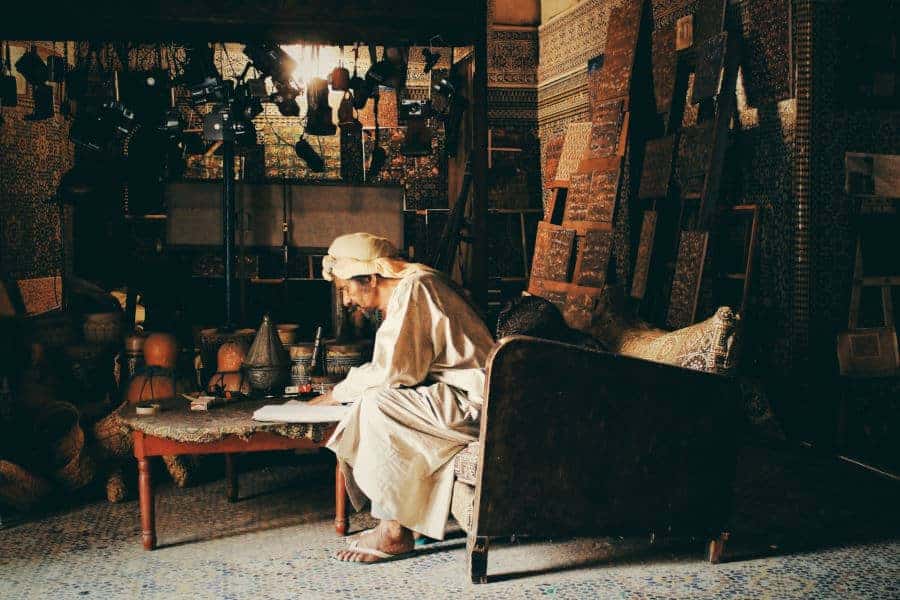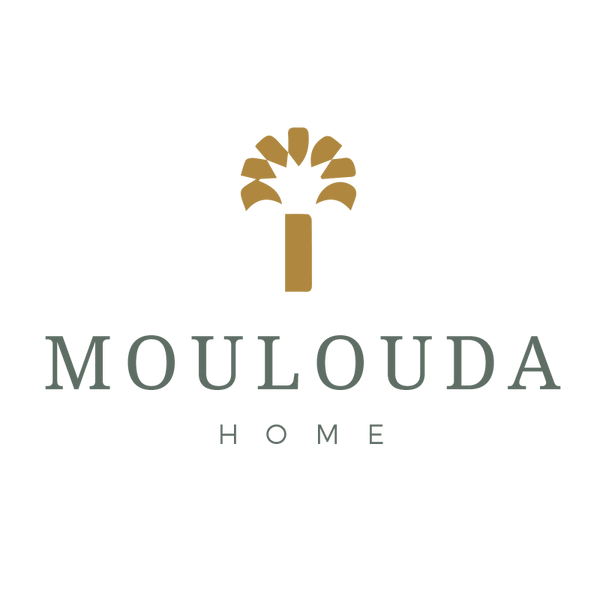
What are Moroccan lamps made of
Are you curious about the enchanting world of Moroccan lamps? Prepare to be captivated as we delve into the intricate craftsmanship and mesmerizing materials that make these lamps truly unique.
Moroccan lamps have a rich history and are known for their exquisite design, which combines traditional techniques with innovative touches.
When it comes to the materials used in creating these masterpieces, metalwork takes center stage. Brass, copper, and silver are meticulously shaped by skilled artisans to form stunning lamp bases and intricate filigree patterns. The result is a harmonious blend of elegance and durability.
But it doesn't stop there. Glasswork is another essential element in Moroccan lamp production. Colored glass pieces are carefully selected and skillfully arranged to cast a warm and inviting glow when illuminated. Stained glass panels add an extra layer of artistry, creating captivating patterns that dance in the light.
To further enhance their allure, Moroccan lamps feature unique decorative accents such as vibrant tassels, delicate beads, or hand-painted motifs. These embellishments add depth and character to each piece.
So whether you're seeking to infuse your space with exotic charm or simply appreciate the artistry behind these creations, exploring what Moroccan lamps are made of will ignite your imagination and leave you craving innovation in your own decor choices. Get ready to embark on a journey through time-honored craftsmanship reimagined for modern aesthetics.
1. History and Origins of Moroccan Lamps
Let's delve into the fascinating history and origins of Moroccan lamps, shall we?
Moroccan lamps have a rich heritage deeply rooted in the influence of Islamic art. Their cultural significance cannot be overstated, as they hold a prominent role in Moroccan architecture and are often seen as symbols of elegance and luxury.
The evolution of design in Moroccan lamps is a testament to the ingenuity and creativity of artisans throughout the centuries. In ancient times, these lamps were crafted using materials such as brass, copper, glass, and even animal skins. The intricate patterns and geometric shapes found on these lamps reflect the unique blend of Arab, Berber, and Andalusian influences.
Moroccan lamps also hold symbolic meaning. They're believed to bring warmth, light, and good fortune to homes. Additionally, they represent unity between different cultures and faiths.
Throughout history, many famous Moroccan lamp artisans have emerged. These skilled craftsmen have passed down their knowledge from generation to generation, ensuring that this traditional art form remains alive today.
In recent years, there's been a revival in modern design incorporating Moroccan lamps. Designers around the world are incorporating these exquisite pieces into contemporary interiors to create an atmosphere that's both captivating and timeless.
So next time you admire a beautiful Moroccan lamp with its mesmerizing glow and intricate details, remember its historical roots and how it continues to inspire innovation in design today.

Traditional Craftsmanship Techniques
Using age-old techniques passed down through generations, skilled artisans in Morocco carefully craft these exquisite lighting fixtures using materials found locally. The craftsmanship involved in making Moroccan lamps is truly remarkable, resulting in pieces that are not only functional but also works of art.
Here are four key aspects of traditional craftsmanship techniques used to create these stunning lamps:
1. Intricate patterns: Moroccan lamps feature intricate designs that showcase the country's rich cultural heritage. These patterns often include geometric shapes and motifs inspired by nature.
2. Skilled artisans: The creation of Moroccan lamps requires great skill and expertise. Artisans who specialize in this craft spend years honing their abilities to ensure each lamp is crafted with precision and attention to detail.
3. Hand-carved designs: Moroccan lamps are typically made using hand-carving techniques, where skilled craftsmen meticulously carve intricate patterns into metal or wood.
4. Traditional materials: To maintain authenticity, Moroccan lamps are made using traditional materials such as brass, copper, or wrought iron. These materials not only add to the beauty of the final product but also contribute to its durability.
The combination of intricate patterns, skilled artisans, hand-carved designs, and traditional materials gives Moroccan lamps their unique charm and cultural significance. By preserving time-honored techniques and incorporating natural elements into their creations, Moroccan craftsmen continue to produce exceptional lighting fixtures admired worldwide.

3. Metalwork: Brass, Copper, and Silver
Experience the allure of metalwork as skilled artisans in Morocco create stunning lighting fixtures using brass, copper, and silver, showcasing their mastery of traditional craftsmanship techniques.
Moroccan lamp designs are known for their intricate beauty and exquisite details. These lamps often feature traditional motifs inspired by Moroccan culture, such as geometric patterns, floral designs, and calligraphy. The finishing techniques applied to these lamps further enhance their aesthetic appeal.
Artistic engravings are a common feature in Moroccan lamp designs. These engravings are meticulously done by hand, adding a unique touch to each piece. Ornamental details like decorative filigree and delicate metal cutouts create a mesmerizing play of light and shadow when the lamp is illuminated.
There are various metalwork variations seen in Moroccan lamps. Brass is commonly used due to its durability and malleability. Copper adds warmth to the design with its reddish-brown hue, while silver brings elegance and sophistication.
Moroccan lamp collectors appreciate the attention to detail and craftsmanship that goes into creating these works of art. Each piece tells a story through its ornate engravings and traditional motifs, making them highly sought after by those who desire innovative decor that reflects cultural heritage.
The metalwork techniques employed by Moroccan artisans result in breathtaking lamp designs that captivate with their artistic engravings, ornamental details, and use of brass, copper, or silver. Whether you're an avid collector or simply appreciate innovation in design, Moroccan lamps offer a glimpse into the rich cultural heritage of this fascinating country.

4. Glasswork: Colored Glass and Stained Glass
Immerse yourself in the vibrant world of glasswork as you marvel at the kaleidoscope of colors and intricate designs that dance before your eyes. Moroccan lamps aren't only known for their metalwork but also for their exquisite glasswork. Glassblowing techniques have been passed down through generations, with Moroccan glass artisans showcasing their mastery in creating stunning pieces.
Exploring glasswork patterns is like embarking on a journey through Moroccan culture. The significance of colored glass can't be underestimated, as it adds depth and character to each lamp. Traditional Moroccan glassmaking involves carefully blending different hues to achieve a mesmerizing effect.
Stained glass holds a special place in Moroccan culture, often found adorning mosques and palaces. Its beauty is enhanced by the interplay between light and color, creating an ethereal ambiance that captivates all who behold it.
Moroccan architecture seamlessly incorporates glasswork into its design, with delicate patterns adorning windows and doors. These architectural elements don't only serve a functional purpose but also showcase the artistry of Moroccan glass lamps.
Innovation meets tradition in the realm of Moroccan glasswork. Each lamp tells a story, reflecting the skill and creativity of its maker. So next time you find yourself gazing at one of these captivating creations, take a moment to appreciate the artistry that goes into crafting these magnificent works of art.

5. Unique Features and Decorative Accents
Enhancing the allure of these exquisite pieces, unique features and decorative accents further elevate the artistry and craftsmanship behind Moroccan glasswork. These distinctive elements are what set Moroccan lamps apart from others, adding a touch of innovation and creativity to any space.
1. Intricate patterns: Moroccan lamps feature intricate patterns that are meticulously crafted by skilled artisans. These patterns often include geometric shapes, floral motifs, and arabesque designs, creating a mesmerizing visual effect.
2. Filigree detailing: Another hallmark of Moroccan lamps is the intricate filigree detailing. This delicate work involves shaping thin metal wires into intricate designs that adorn the lamp's surface, adding an extra layer of elegance and sophistication.
3. Hand-painted designs: Many Moroccan lamps showcase hand-painted designs that depict traditional Moroccan scenes or abstract patterns. Each brushstroke adds a personal touch to the lamp, making it a true work of art.
4. Ornate tassel embellishments: To further enhance their beauty, Moroccan lamps often feature ornate tassel embellishments hanging from their base or around the edges. These decorative elements add movement and charm to the overall design.
5. Mosaic glasswork: A signature characteristic of Moroccan lamps is their stunning mosaic glasswork. Pieces of colored glass are carefully arranged in intricate patterns on the lampshade, creating a captivating display when illuminated.
With their unique lampshade shapes, vibrant color combinations, and incorporation of traditional Moroccan motifs like arabesques and henna-inspired designs, these extraordinary features turn each Moroccan lamp into a statement piece that brings warmth and innovation to any interior décor scheme.

Conclusion
In conclusion, Moroccan lamps are truly a work of art, skillfully crafted by talented artisans using traditional techniques. The use of brass, copper, and silver in metalwork adds a touch of elegance and durability to these lamps.
The incorporation of colored glass and stained glass creates stunning patterns and vibrant hues when illuminated. The unique features and decorative accents make Moroccan lamps a captivating addition to any interior design.
So, if you're looking for a piece that exudes history, beauty, and cultural richness, look no further than a Moroccan lamp.
